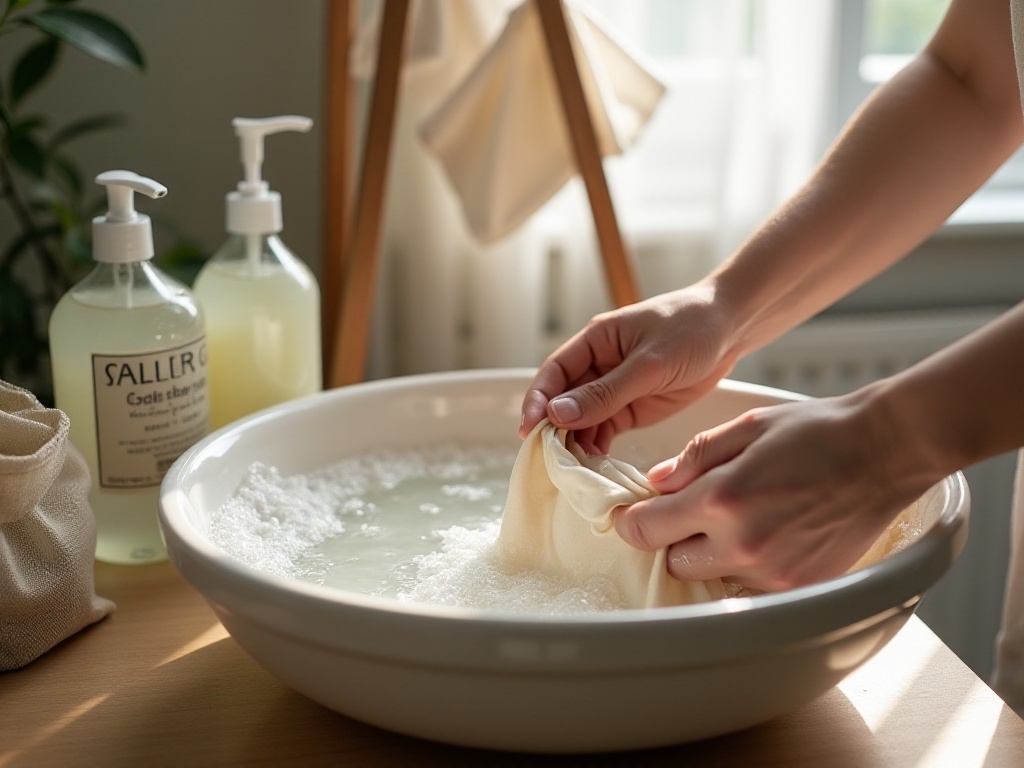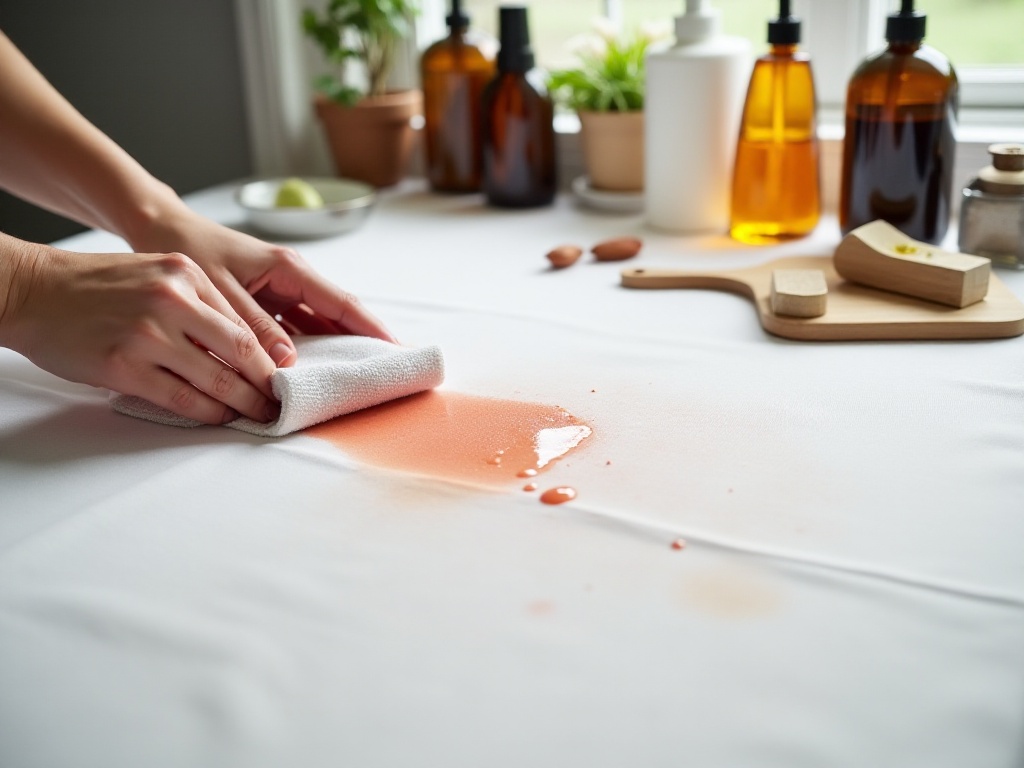Introduction
The other day while going through my closet, I saw that Levi's jeans I bought long ago. Honestly, these pants have accompanied me through countless days and nights, from college to work, from blind dates to marriage, witnessing every important moment in my life. Despite wearing them for so long, they still look as good as new, with the blue remaining pure, which made me realize: clothes can truly stay beautiful for so long if you use the right methods!
As someone who has been studying clothing care since college, I've experienced numerous failures and attempts. I remember when I first started college, due to not knowing the correct washing methods, I turned my favorite UNIQLO black leggings gray, which was really frustrating at the time. Looking back now, if I had known these care tips then, that pair of pants wouldn't have met such an early demise.
Today, I want to share all the experience I've accumulated over these years. These methods are not only practical but also personally tested by me. I believe that as long as you put your heart into it, you can definitely give every piece in your wardrobe a second life.

Pre-wash Preparation
Speaking of pre-wash preparation, I really have a lot of feelings about this. When I first started working, to save time, I often threw all clothes into the washing machine together. The results were predictable - either this would bleed color or that would fade, causing me to constantly buy new clothes online. Later, while shopping at a mall, I met a very professional sales assistant who educated me about clothing care, which was truly eye-opening.
The technique of turning clothes inside out for washing sounds simple, but it's really effective! Especially for printed T-shirts, it's absolutely a lifesaver. I have a limited edition Supreme T-shirt that still looks perfect after three years of wear, just because I've always washed it inside out. The same goes for jeans. My current pair of Levi's has been washed inside out since day one, and look at them now - still brilliantly blue after all this time, showing no signs of age.
Sorting laundry is also a major subject. I initially thought it was troublesome, but after experiencing several "disasters," I really started taking it seriously. Once, I washed a new red dress with white underwear together, and you can imagine the result - all the white underwear turned pink. Since then, I've kept three laundry baskets at home, separately for white, light-colored, and dark-colored clothes.
For those especially delicate fabrics like silk and wool, I always use special laundry mesh bags. Honestly, this investment is really worth it. I have a silk nightgown that still feels as smooth as ever after four years of wear, simply because I always wash it in a mesh bag.
Another important preparation is checking care labels. I know many people find this tedious, but trust me, spending one minute reading the care label can save you money on buying new clothes. I have a friend who didn't check the care label and threw a four-digit priced cashmere coat directly into the washing machine, resulting in the whole coat shrinking and becoming unwearable.

Washing Methods
When it comes to specific washing methods, many people might find my suggestion counterintuitive: wash clothes in cold water. Yes, cold water! I know many people are used to using hot water, thinking it cleans better. But actually, cold water washing not only preserves the clothes' color but also prevents shrinkage. From my experience, clothes washed in cold water maintain their colors exceptionally well.
I remember when I just changed jobs, I bought several basic UNIQLO T-shirts, and my colleagues joked about why I was buying such basic styles. But because I always washed them in cold water, these T-shirts have lasted three to four years now, maintaining both their shape and color perfectly, while those colleagues who laughed at me saw their expensive T-shirts deform and fade after just a few washes.
Regarding detergent amount, I also have unique insights. Many people think more detergent means cleaner clothes, which is actually a misconception. Excessive detergent not only doesn't clean better but will leave residue on clothes, causing yellowing and stiffness. I now use half the recommended amount plus a small spoon of baking soda, which works particularly well.
Speaking of baking soda, it's truly a magical thing. It not only enhances washing effectiveness but also removes odors from clothes. Once after returning from a barbecue party, my clothes were full of grilled meat smell, but after soaking with baking soda for half an hour, the smell was completely gone. Plus, baking soda is very cheap, just a few dollars per box, yet it serves as a clothing cleaning assistant multiple times.
For clothes that are particularly prone to color bleeding, like jeans, I soak them in salt water before the first wash. The specific method is to add an appropriate amount of salt to water and soak the jeans for half an hour, which helps fix the color well. All my current jeans are treated this way, and they've shown no significant fading after long wear.
Hand washing is also a skill. Many people think scrubbing hard means cleaning better, but this actually damages the clothes. The correct method is to first soak the clothes in water with an appropriate amount of detergent, gently knead them, apply slightly more pressure on heavily soiled areas, but never wring the clothes as this can easily deform them.

Drying Techniques
Drying can be said to be the most easily overlooked step in the entire clothing care process, but its importance is no less than washing. I particularly advocate for natural drying, not only because it's good for the clothes but also saves electricity and money. However, note that not all clothes are suitable for direct sunlight exposure.
For example, dark-colored clothes are best dried in a shaded, well-ventilated place. My balcony is divided into two areas, one with direct sunlight for white clothes, and another with shade for dark-colored clothes. Clothes dried this way result in whites being especially bright while dark colors don't fade.
Drying sweaters and knitwear is truly a technical matter. These types of clothes are most susceptible to stretching and deformation, so they absolutely cannot be hung on hangers to dry. The correct method is to lay them flat on a drying net, paying attention to properly arrange areas prone to deformation like the neckline and cuffs. I bought a foldable drying net at home that can be stored when not in use and opened when needed, which is very convenient.
The choice of hangers is also particular. Although plastic hangers are very cheap nowadays, I still recommend investing in some good wooden hangers. Wooden hangers not only maintain the shape of clothes better but also last longer. I hang my suits and shirts on wooden hangers, which helps maintain the shoulder shape well. Especially for men's suit jackets, poor quality hangers can easily deform the shoulders.
When drying, it's also important to leave appropriate spacing between clothes for better ventilation and drying. I've seen many people squeeze clothes together to save space, resulting in clothes not drying properly even after a whole day and potentially developing odors. So it's better to take longer to dry than not give clothes enough "breathing space."
Storage Tips
Storage is truly a major subject. I've experienced many painful lessons before summarizing an effective set of methods. First, choosing the right storage environment is particularly important. I keep several moisture absorbers in my wardrobe and replace them regularly to maintain dryness inside the closet.
I remember one particularly humid summer when my down jacket, stored all winter, developed mold spots due to the excessive humidity. That down jacket was expensive, and I was so distressed I couldn't sleep well for several days. Since then, I've been particularly careful about controlling humidity in clothing storage environments.
Many people like to use plastic dust covers for valuable clothes, thinking this prevents dust and insects. But this is actually a big misconception. Plastic bags don't breathe, and long-term use can actually cause clothes to mold. I now use cotton-linen dust covers, which although more expensive, breathe well and can be reused, making them more economical in the long run.
For seasonal clothing storage, I have a small trick. Before storage, make sure clothes are completely dry, then spray some natural insect-repellent sachets, like lavender or mothballs. This not only prevents insects but also keeps clothes smelling fresh.
The method of folding clothes is also important. I now use the vertical storage method popular among Japanese housewives, which involves folding clothes in half and rolling them up, storing them vertically in drawers. This not only saves space but also prevents other clothes from getting messy when taking items out. I store my T-shirts and sweaters this way, and every time I open the drawer, everything is neat and tidy, which is very satisfying to see.

Maintenance Tips
When it comes to clothing maintenance, the most important thing is developing the habit of timely repairs. Many people might think a small hole in clothes is no big deal, but this thinking is particularly dangerous. If small holes aren't repaired, they'll quickly get bigger, and eventually the whole piece of clothing might be beyond saving.
I've developed the habit of mending right away. I keep sewing supplies at home, and as soon as I notice loose threads or small holes, I fix them immediately. Honestly, basic mending skills aren't hard to master, there are many tutorials online, and it just takes a little time to learn. Plus, the sense of achievement after mending is really great, like giving clothes a new lease on life.
Shoe care is also a science. I think the most important thing is developing the habit of cleaning shoes daily. Especially for leather shoes, wipe them with a soft cloth after wearing and use shoe trees, which helps maintain their shape well. When shoes get wet in the rain, they must be dried naturally - never use a hair dryer directly as this will make the leather hard and deformed.
For sneakers, my suggestion is to regularly clean the laces and insoles. Many people only focus on cleaning the upper part but neglect these two areas. Actually, shoelaces and insoles are the most likely places to harbor dirt and grime. Regular cleaning not only maintains overall shoe cleanliness but also prevents odors.

Final Thoughts
Years of practice have made me deeply realize that clothing care is actually a life attitude. When you start treating each piece of clothing seriously, you'll find they reward you with lasting beauty. Moreover, good clothing care habits not only save money on buying new clothes but more importantly cultivate an attitude of cherishing and gratitude.
Just like my pair of jeans that have accompanied me for so many years, they're not just a pair of pants but carry my memories and growth over these years. Every time I wear them, I think of my bits and pieces of life, and that feeling is really wonderful.
So, if you also want to give your wardrobe a second life, why not start now and treat each piece of clothing with care. Trust me, when your clothes remain beautiful due to careful maintenance, that sense of achievement is irreplaceable.
Which of these care methods are you already using? And which ones would you like to try? Welcome to share your experiences and thoughts in the comments section.




